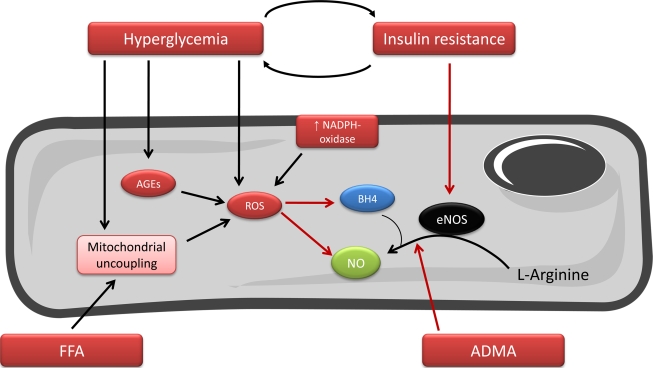Figure 1.
Principal mechanisms responsible for endothelial dysfunction in diabetes. NO is the principal anti-atherosclerotic endothelium-derived mediator. It is formed from l-arginine by eNOS, being tetrahydrobiopterin (BH4), a crucial cofactor for the reaction. Endothelial dysfunction is defined by the presence of a reduced NO bioavailability. In the presence of diabetes, characterized by the existence of insulin resistance and hyperglycemia, endothelial dysfunction is due to both reduced production (increased circulating levels of the eNOS endogenous inhibitor asymmetric dimethylarginine [ADMA], decreased cellular levels of BH4 and decreased eNOS activation) and to an increased breakdown of NO by ROS. AGEs, advanced aging end products; FFA, free fatty acids.

